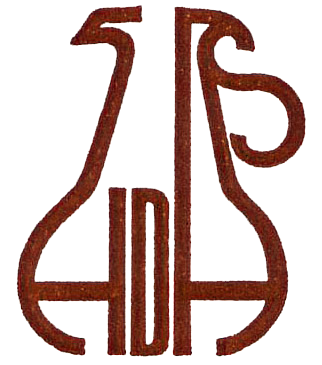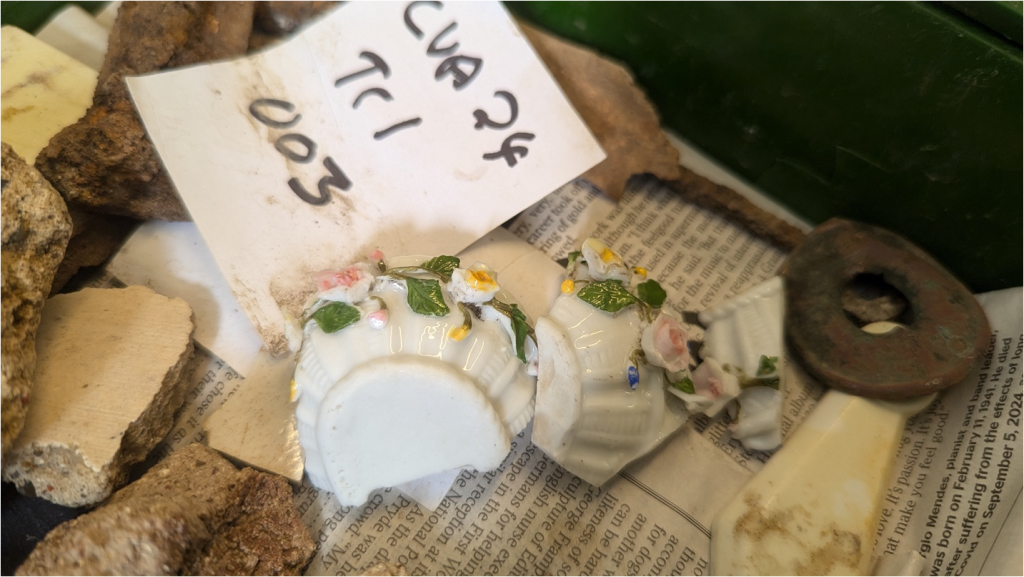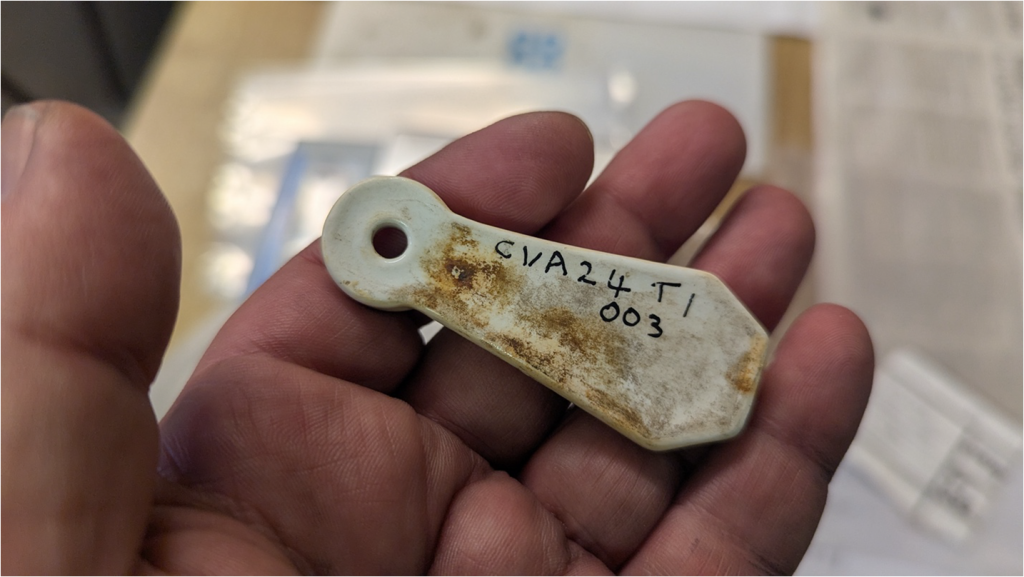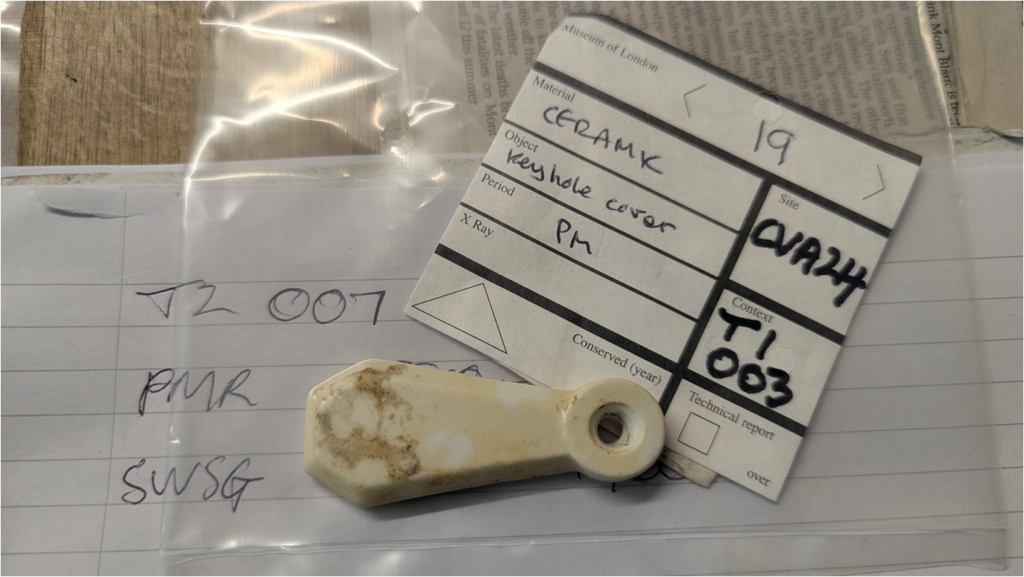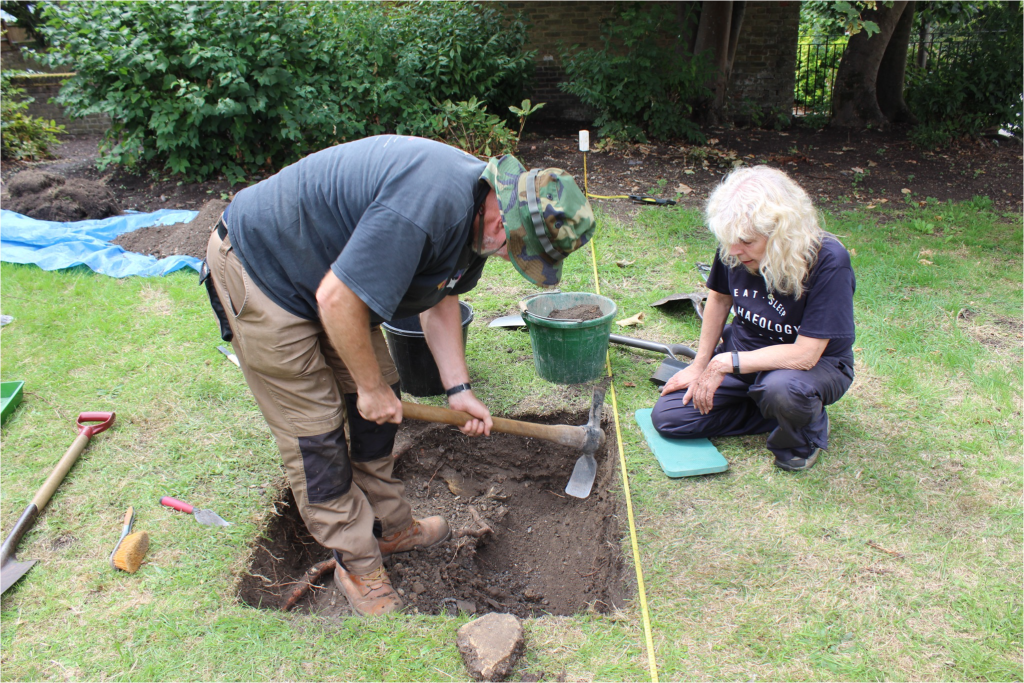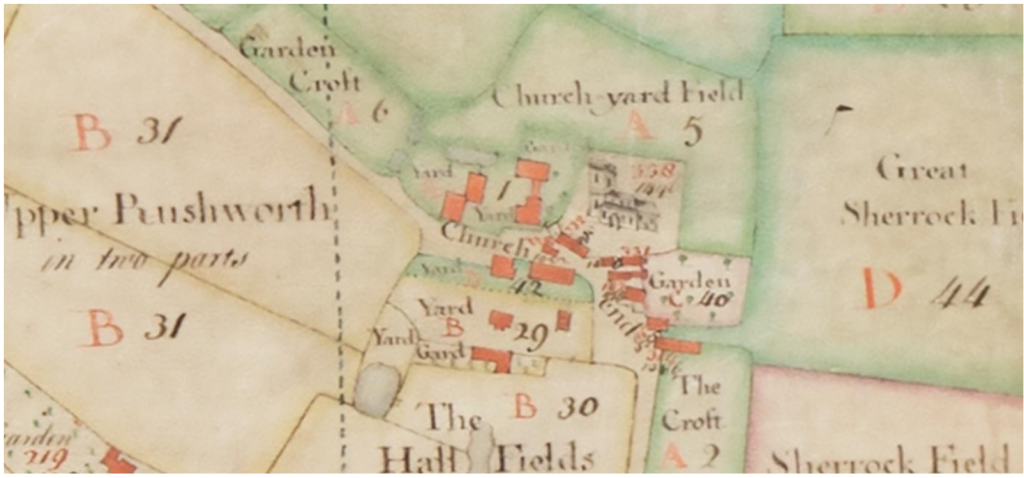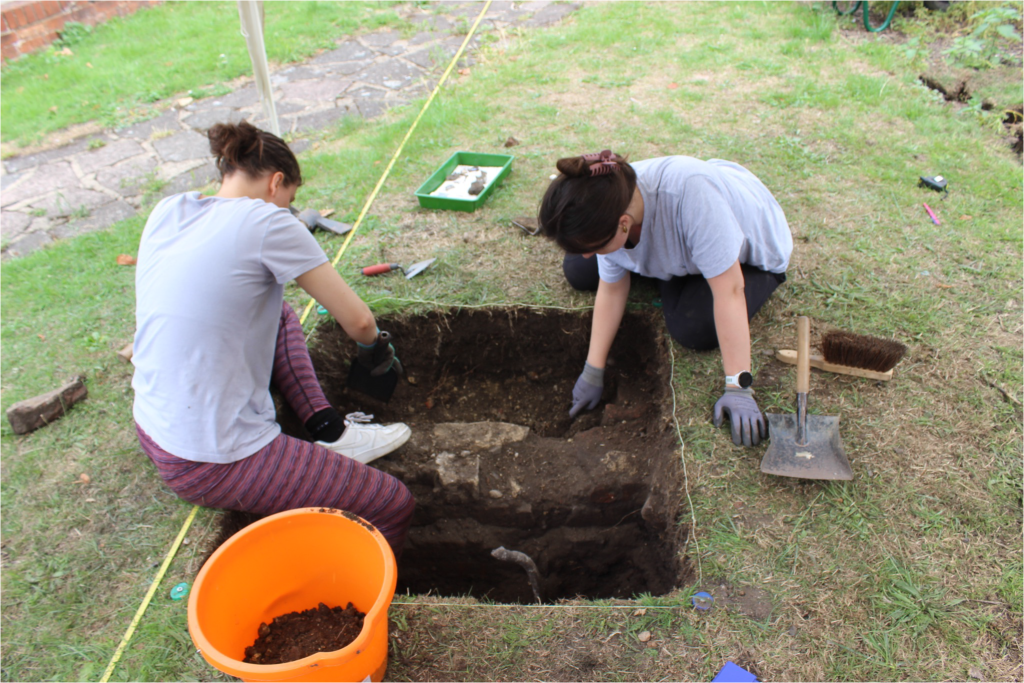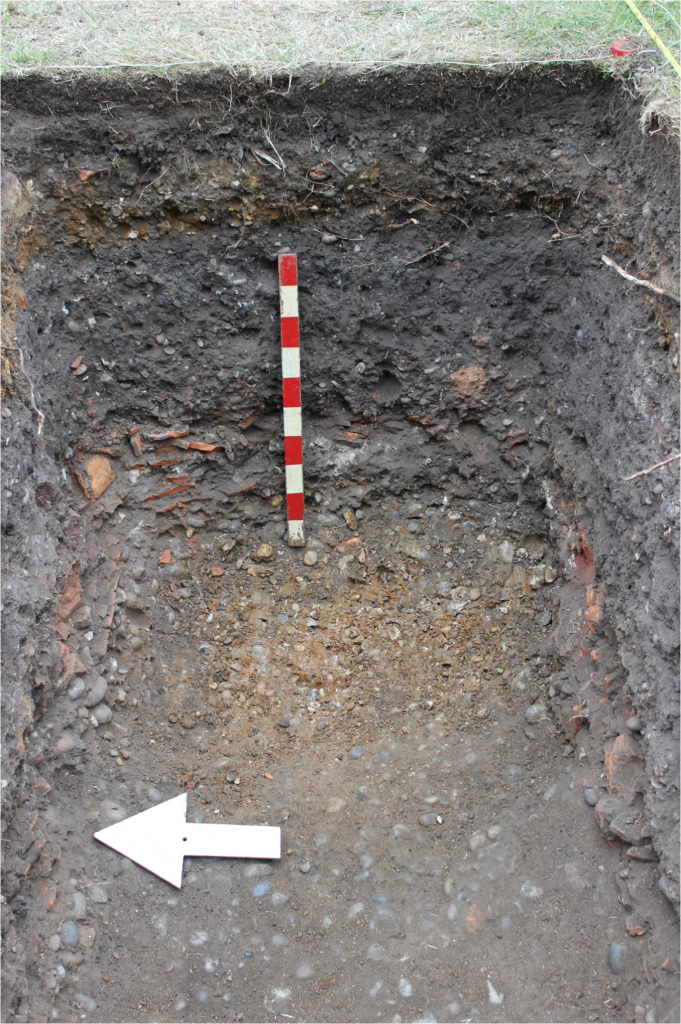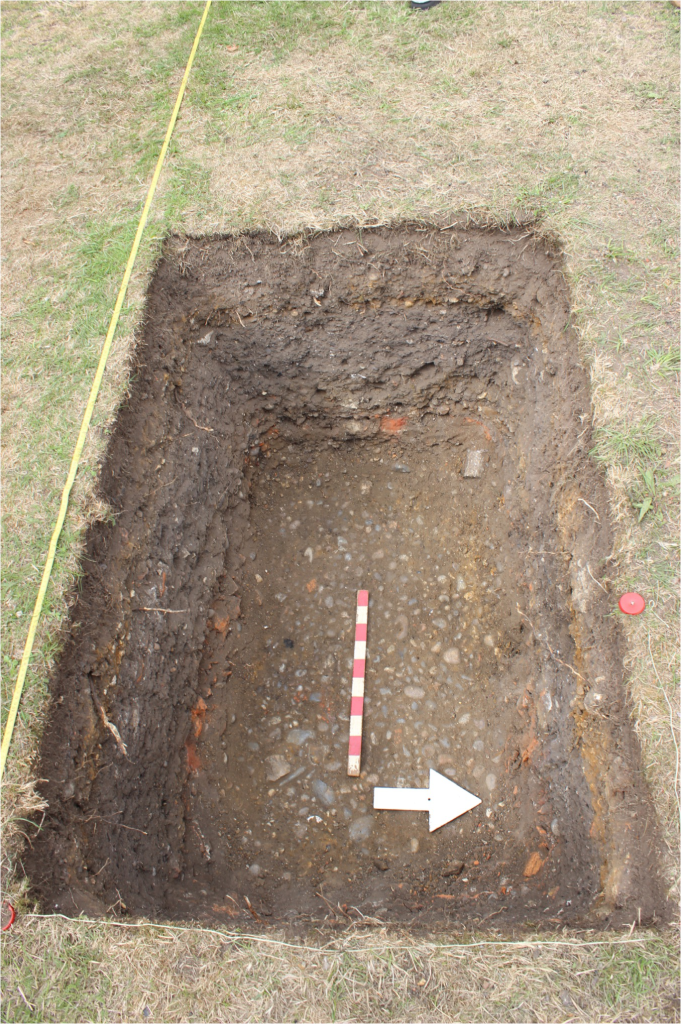
No. 654 September 2025 Edited by Sandra Claggett
HADAS DIARY – Forthcoming Lectures and Events
Tuesday October 14th 2025 Dr. Wendy Morrison – “Our Cross to Bare: Chalk carvings in the Central Chilterns”
Tuesday November 11th 2025 Dr. Signe Hoffos – “Pre Fire Churches of the City of London churches lost to the great fire of London in 1666” this replaces the previous lecture entitled “Lost Churches of the City of London: 500 years of City churches lost to fire, war and urban redevelopment” as this had been heard by members a few years ago.
No lecture in January 2026
Tuesday February 10th 2026 Dr James Bromwich. “Great archaeological discoveries and great archaeologists of France: Alexandre du Mège: a founder of archaeological research in France – or rogue?Léon Joulin: an outstanding intellect and a founder of modern archaeology. Émile Chénon: a leading nineteenth century lawyer with a love for archaeology. Sophie Krausz: in the forefront of twenty-first century archaeology and museum presentation”
Tuesday March 10th 2026 Les Capon from AOC Archaeology is back after his last very interesting lecture this time he will talk about archaeological material evidence from Bricks to Gold.
Tuesday April 14th 2026 Scott Harrison on “Behind the Battle of Barnet banners. People of the War of the Roses. The lives of people that fought at the Battle of Barnet and the life society and culture of the late fifteenth century.”
Lectures held in the Drawing Room, Avenue House, 17 East End Road, Finchley N3 3QE. 7.45 for 8pm.
Buses 13, 125, 143, 326, 382, and 460 pass close by, and it is a five-ten-minute walk from Finchley Central Station on the Barnet Branch of the Northern Line where the Super Loop SL10 express bus from North Finchley to Harrow also stops. Tea/Coffee/biscuits available for purchase after each talk.
Events news Janet Mortimer
Some HADAS members are going on a “bus pass” visit to the Secrets of the Thames exhibition at the London Museum in Docklands in early September. This will be on a Saturday and the cost of entry is from £16. If you are interested in joining them please email secretary@hadas.org.
1 of 12
We are also going to hold another HADAS Open Day at Stephens House and Gardens, East End Road in
Finchley on Sunday 21st September between 10am and 4pm. Volunteers to help set up the stall from
9.30am and help out in the day would be very welcome.
Sandra Claggett
HADAS have been informed that they can visit Tudor Hall in High Barnet. This would be a rare opportunity to have access to a genuine Elizabethan building especially as the building is likely to be privately sold.
More information concerning the visit will be sent out to members as it is known. Meanwhile here is a link
to information on the building. Tudor Hall // High Living Barnet.
The following site phasing and Pottery Report is further analysis from HADAS 2024 excavation:
Church Road, Hendon, NW4, HADAS Excavation 2024, Site Code CVA24 Bill Bass
Part 3 Site Phasing – Andy Simpson and Tim Curtis
CVA 24 site phasing based on the Small Finds
Phase one – pre- Bennet’s School:
A fragment of pipe bowl is large enough to ascertain that its internal diameter at the rim would have been 16mm. The fragment is also large enough to ascertain that the bowl would have had an upright shape. This size together with its shape would indicate that it was probably manufactured during the 19th century. None of the pipe stems are datable but according to the National Pipe Archive NPA home
(NPA home) the bore hole size is consistent with pipes manufactured from the late 18th century.
Phase two – Bennet’s School 1766/72 – 1857:
Slate pencil frags, Trench 1 [001], Trench 2 [001] and Trench 3 [001].
Stove top, Trench 1 [003] small find 7.
Stoneware ink bottle Trench 3 [005], small find 18 contained in mortar floor.
Contexts [001] in trenches 1,2, and 3 is topsoil.
Phase three – Hendon Baptist Church/ Working Men’s Club:
Toast Rack, Trench 1 [003] small find 8.
Trench 1 [003] was an 18cm deep mortar layer – yellow/white mortar demolition layer.
Phase four – Kings Furniture Warehouse 1888-1937:
Furniture fitting, Trench 1 [003] small find 6.
Keyhole cover, Trench 1 [003] small find 19.
Phase five – WW2
(unknown use).
Phase six Public Open Space
Coins
2p 1975/ 20p 1993, Trench 1 [001].
1p 1980/10p 1995, Trench 2 [001].
1p 2001, Trench 2 [006].
Finger ring, Trench 1 [001].
2 of 12
Dairy bottle Express Dairies, Trench 3 [001] small find 17.
Bottle base, Trench 3 [001] small find 16.
Milk bottle base, Trench 2 [001] small find 13.
CVA24 Church Road – Pottery Report – Trench 1 Melvyn Dresner
Trench 1
Context 001 (Topsoil)
Typical 19th and early 20th century domestic pottery, refined white earthenware (REFW) plate, circa 180mm, white stoneware (WHIST) jar base with 40mm diameter, and transfer printed ware (TPW2) tea cup, rim circa 80mm.
Context 002 (Demolition layer, silty clay and construction building material)
Mainly 19th and 18th century pottery including refined red earthenware, transfer printed ware (TPW 4, TPW Flow, TPW) plates with green decoration and flow blue, white salt-glazed stoneware (SWSG) cup and bowl, and London-area post medieval redware (PMR) flower pot and cookware.
Context 003 (and Context 004) both mortar layers
Context 003 includes English porcelain (ENPO) bowl, white salt-glazed stoneware (SWSG) and London
tin-glazed ware with pale blue glace (TGW Blue). This context also includes a REFW toast rack, ceramic
stove top, curtain pull and ceramic door furniture (key hole cover). The ENPO bowl has a rim dimension of
50mm, in three fragments circa 63% of the bowl recovered.
English porcelain from Context 003:
3 of 12
Context 004
As noted silty clay similar or same as context 003. This included one fragment of English porcelain (ENPO)
saucer, hand painted, also clay pipe stem.
Context 005 (clay with bone and ceramic building material)
This context also included oyster shell and worked stone. Refined white earthenware (REFW) and London-
area post medieval redware (PMR), all forms unidentified apart from one PMR bowl with rim dimensions of 190mm.
A further article on the pottery report for this excavation will appear in a later newsletter.
Vine Cottages Excavation 2025 Catie Teodorescu
Introduction
Between the 31st of July and the 4th of August, members of HADAS and the public undertook a programme of trial trenching on the site of the Vine Cottages opposite the Greyhound pub in Hendon. This project was advertised as part of the Council for British Archaeology’s Festival of Archaeology, which, themed ‘archaeology and well-being,’ was well suited for the community focus of the project. The objectives of the excavation were as follows:
- Establish the phasing, uses, occupation and development of Vine Cottages and the adjoining site (Church House — part of which appears to be on our open space site).
- Establish likely date of construction of Vine Cottages
- Establish whether there is evidence of earlier buildings and use of the site.
- Understand the wider context and setting of Vine Cottages, drawing on previous historical and excavation work undertaken by HADAS and others.
4 of 12
Historical Background
Research compiled by HADAS members prior to the excavation revealed that late Post-Medieval and early
modern buildings were well documented through historical maps, newspapers, and other documents — even including aerial photographs. There is not much evidence for archaeological remains from earlier periods on the site. St Mary’s church is of medieval fabric and includes Norman elements, and it is speculated that Hendon has Saxon roots based on its etymology. An excavation at Church Terrace in 1973/1974 uncovered early medieval features in the form of ditches and human remains near the Medieval church ground, but the finds were predominantly from the Post-Medieval period. The Historic Environment Records (HERs) showed a scattering of find spots of individual artefacts across the various historical periods within one kilometre from the site, but not many surviving monuments. The potential for prehistoric and Roman remains was low. The potential for Saxon and Medieval remains was moderate due to its location by the church, although it was likely that later development truncated older archaeological deposits. The potential for Post-Medieval and early modern remains was high, but the extent to which they survived phases of development and demolition was unclear.
5 of 12
Historic Maps
The earliest historical representation of a building on the study site was in the James Crow Map of 1754.
Further details can be seen on the Hendon Tithe Map of 1840, the OS Maps in the 1860s, and the OS Maps in the 1890s.
Methodology
A baseline was laid on an east-west axis, and three trenches were laid in locations that would allow for an
overview of as much of the site as possible while staying clear of known service lines. Two trenches were
placed with their northern edge along the baseline and the third was aligned on its southern edge. All
6 of 12
three trenches started as 1m by 1m squares and were extended to varying degrees throughout the excavation. All digging was done by hand, using mattocks, shovels, trowels, and even a spoon borrowed from The Greyhound pub. Single context recording was used to document archaeological deposits and features, and a stratigraphic matrix was kept for each trench. Multi-context plans were used in most cases, althoughcontexts which were seen uniformly within the trench were not planned.
Trench 1
Trench 1 was the easternmost of the three trenches, with its northern edge along the baseline. The wall
foundation (003), which has been interpreted as belonging to one of the outbuildings that can clearly be seen in the aerial photographs, was quickly uncovered. The inside of the outbuilding was found on the east side of the wall, where a large deposit of concrete (007) prevented further digging. A possible perpendicular wall (005) on the southern end of the trench was visible as well. The outside of the building on the west side was made up of rubbly deposits and contained a lead pipe which was not able to be removed. The trench was extended 50cm at a time, three times, until the modern concrete path stopped further expansion. A floor surface (008) was uncovered at a shallow depth, as well as a possible cut [012] in between this floor and the wall (005). The trench was extended a final time, this time 50cm to the south, in order to determine the extent of wall (005) and reveal whether the interpretation of cut [012] was accurate. This final extension revealed a small area inside the building with another lead pipe that may relate to outdoor toilets known to have existed on the site. Another, newer brick floor (011) bounded this on the west, and was levelled underneath with concrete that was likely the same as the deposit (007). The sequence could clearly be seen, with floor (008) as the older surface, and floor (011) being the newest levelled by concrete (007). The hardness of the early modern concrete made it impossible to dig to earlier levels, but the bottom of the wall was found on the outside. The presence of asbestos-containing materials in the southwestern corner stopped any further extension.
7 of 12
Trench 2
Trench 2 was located in the middle of the site with its southern edge along the baseline. Just four layers
were found, and it was the only trench to definitively hit the natural ground at the bottom. The top layer,
(001), seemed to be garden soil which overlaid a rubbly layer (002) that may be related to demolition of
older structures or made ground. Beneath these thicker deposits, there were two pebble floor surfaces ((003) and (004)) that could have been garden paths or other outdoor surface areas. The trench was extended 50cm to the east when the first floor (003) was found. Both floors continued beyond the extension. The natural was hit about 80cm deep into the trench and was composed of clay densely packed with pebbles.
Trench 3
Trench 3 was located on the western end of the site with its northern edge along the baseline, and had the challenge of being bisected by a large tree root. It contained a similar initial deposit (001) of darker coloured soil, possibly from the garden areas of the cottages, that was found in Trench 2. This was covering a pebble surface (002) overlying made ground containing rubble (003). Underneath this layer, a post-hole [005] and a stake-hole [007] were cut into yellowy clay (009). This clay was only in the southwest part of the trench, next to a darker brown clay (008). The relationship between the two deposits was unclear at this point, so trench 3 was then extended 50cm south. Two different surfaces were found, which both seemed to end exactly where the original limit of excavation had been. The levelling layer (011) between the two floors contained a large variety of broken pot and other domestic finds. The older surface (012) also contained a stoneware bottle and was overlying the same yellow clay layer that was found in the original extent of the trench. It was discovered that the yellow clay (009) was on top of the brown (008), and there was a narrow deep cut on the western edge of the trench. The extent of this feature was not able to be excavated fully, but interestingly, two Anglo-Saxon finds were discovered one
8 of 12
was a pin head and the other a spiral glass bangle. It is clear that the archaeology was disturbed by later Post-Medieval development, but it is possible that this deep feature could relate to older activity on the site. It is unclear whether the natural was reached in this trench.
Conclusion
Now that the fieldwork has ended, the finds and paperwork will be processed. Finds will be washed, sorted, and analysed for evidence to help date deposits or learn more about life in the cottages. The context sheets, plans, and matrices will be assessed to gain a deeper insight on the chronology of the site and the relationship between the features that were excavated. This work is being done on Sunday mornings.
Finally, I just want to say a big thank you to everyone who took part in this project and supported it
throughout. Having only just been elected Field Officer in the last couple months, it was an exciting
challenge to jump headfirst into the role. A special thank you to Roger and Bill for organising this project
from the start. To everyone who came to dig, including our five new members, I hope you all enjoyed it as
much as I did! I look forward to providing updates as we analyse the findings.
Jurassic-era winged reptile found on Skye Stewart Wild
A new species of flying dinosaur has been discovered on the Isle of Skye. The winged reptile lived between 168 and 166 million years ago, during the Middle Jurassic period, and has been named Ceoptera evansae by palaeontologists.
It was first unearthed during a field trip in 2006, when excavations revealed an incomplete skeleton made up of the shoulders, wings, legs and backbone. Almost two decades of work at the village of Elgol have
involved preparing the fossil and making scans of the bones, some of which remain embedded in the rock. Researchers say the specimen belongs to the group of pterosaurs known as Darwinoptera, with many similar dinosaurs found in China.
The Skye individual is rare, the scientists say, and could help shed light on the evolution of pterosaurs. The study, published in the Journal of Vertebrate Paleontology, suggests that Darwinoptera may have been more diverse than previously thought, living for more than 25 million years.
Professor Paul Barrett, a researcher at the Natural History Museum, said, “Ceoptera helps to narrow down
the timing of several major events in the evolution of flying reptiles. Its appearance in the Middle Jurassic
was a complete surprise, as most of its close relatives are from China.
“It shows that the advanced group of flying reptiles to which it belongs appeared earlier than we thought and quickly gained an almost worldwide distribution.”
Ceoptera evansae gets its name from the Scottish Gaelic word cheo meaning mist or fog, and the
Greek/Latin word ptera meaning wing. The second part, evansae, honours Professor Susan Evans, a British
palaeontologist, for her years of scientific work, especially on Skye.
SOURCE: Daily Telegraph, 6 February 2025.
9 of 12
Flying dinosaur fossils unearthed Stewart Wild
The fossilised remains of North America’s oldest known flying dinosaur – dating back more than 200
million years – have been unearthed.
Researchers say the “seagull-sized” pterosaur would have been small enough to comfortably perch on a
person’s shoulder.
Pterosaurs lived alongside other dinosaurs, as well as frogs and turtles, and were the first vertebrates to
evolve powered flight. The jawbone of the new pterosaur species was discovered alongside hundreds of
other fossils, including one of the world’s oldest turtle fossils, at a remote bonebed in Petrified Forest
National Park, Arizona.
The fossils, dating back to the late Triassic period about 209 million years ago, preserve a “snapshot” of a
dynamic ecosystem where older groups of animals, including giant amphibians and armoured crocodile
relatives, lived alongside evolutionary “upstarts” such as frogs, turtles and pterosaurs.
SOURCE: Daily Telegraph, 8 July 2025
Roman coin haul sells for £27k Stewart Wild
A hoard of Roman silver coins that were discovered by a grandfather and grandson metal detectorists has
sold for more than £27,000. The 374 Denarii coins were unearthed on North Yorkshire farmland by Ray
Stobbs, 50, and his 10-year-old grandson Thomas.
Mr Stobbs, a welding supplies salesman from Middlesbrough, dug down 12 inches and uncovered a broken pot that is believed to have been buried for safekeeping in the second century BC by a Roman soldier. The hoard was found in June 2021 in a field near the village of Little Busby. “We are over the moon with the results,” said Mr Stobbs.
SOURCE: Sunday Telegraph, 30 March 2025
Note: Suspect Telegraph proofreading. Surely AD not BC.
10 of 12
OTHER SOCIETIES’ EVENTS Eric Morgan
As always, please check with the Societies’ website before planning to attend, since not all Societies and organisations have returned to pre-covid conditions.
Wednesday 17th September, 7.30 pm. Willesden Local History Society – St. Mary’s Church Hall, bottomof Neasden Lane (Round corner from the Magistrates’ Court) London, NW10 2DZ. Cricklewood Library: A History. Talk by Sally Long on how a much loved Community Asset had survived closure and re-building, thanks to the efforts of local residents in Cricklewood. For further details please visit www.willesden-local-history.co.uk.
______________________________________________________________________________________________________________________________
*Until Thursday 30th October, London Archives, 40 Northampton Road, London. EC1R0HB. London in WW2. Free (Closed Fridays and Sundays). Explores experiences of Londoners during WW2 and the effect it had on the City, using bomb damage maps,diaries, art works, and photos.
______________________________________________________________________________________________________________________________
Tuesday 7th October, 11 am. Enfield Society. Jubilee Hall, 2 Parsonage Lane/Junction Chase Side,Enfield. EN2 0AJ. Unlocking Broomfield. Talk by John Cole (Trustee) on a project focussing on Broomfield Park and House. Please visit www.enfieldsociety.org.uk. Non-member charge £1.
Friday 10th October, 7.30 pm. Enfield Archaeological Society. Talk on zoom. Tudor coin hoards in England and Wales. By Murray Andrews (U.C.L). Please visit www.enfarchsoc.org.uk for further details and link.
Monday 13th October, 3 pm. Barnet Museum and Local History Society. St. John the Baptist Church, Chipping Barnet, Corner High Street/2 Wood Street, Barnet EN5 4BW. London Colney Airfield and the Royal Flying Corps. Talk by Guy Thomas. Please visit www.barnetmuseum.co.uk for further details.Refreshments available afterwards. Visitors charge £2.
Wednesday 15th October. 7.30 pm. Willesden Local History Society. St. Mary’s Church Hall (address as for Wednesday 17th September). Street Signs in Willesden. Talk by Simon Morris (London Topographical Society). How Willesden and neighbouring parishes chose and erected them and how local residents reacted to them.
Thursday 16th October. 8 pm. Historical Association- Hampstead and N.W. London Branch.Fellowship House, 136A Willifield Way, London. NW11 6YD (off Finchley Road, Temple Fortune) History of Backchannel Talks and Nascent Peace Processes in Northern Ireland. Talk by Dr. Tony Craig.
Looks at secret Backchannels in their wider form as used in Northern Ireland to communicate with both Republican and Loyalist Para-militaries and to evaluate their role in both guiding and as part of a wider Government strategy. Also on Zoom. Please email Dudley Miles (HADAS) on dudleyramiles@googlemail.com or telephone 07469 754075 for details of link and how to pay (there may bea voluntary charge of £5). Refreshments available.
Friday 17th October, 7.30 pm. Wembley History Society. St. Andrew’s Church Hall (behind St. Andrew’s new church) Church Lane, Kingsbury, London. NW9 8RZ. A Scrapbook History of 40 years of Barn Hill Conservation Group. Talk by Maria Gold (Barn Hill Conservation Group) on a potted history of their work. Visitors charge £3. Refreshments available.
11 of 12
Wednesday 22nd October, 7.30 pm. Friern Barnet and District Local History Society. North Middlesex Golf Club, the Manor House, Friern Barnet Lane, London N20 0NL. The Miners’ Strike. Talk by NickJones. Please visit www.friernbarnethistory.org.uk for further details. Non-members charge £2. Bar to be available.
Thursday 30th October, 7.30 pm. Finchley Society. Drawing Room, Avenue (Stephens’) House, 17 EastEnd Road, London. N3 3QE. Jean Scott Memorial Lecture. Talk by Frank Kelsall on the life of the Society’s founder. For further details please visit www.finchleysociety.org.uk. Non-members charge £2. Refreshments in the interval.
Thanks to our contributors this month: Bill Bass, Eric Morgan, Janet Mortimer, Melvyn Dresner, CatieTeodorescu and Stewart Wild.
Hendon and District Archaeological Society
Chair Sandra Claggett, c/o Avenue House, 17 East End Road, Finchley N3 3QE
email : chairman@hadas.org.uk
Hon. Secretary Janet Mortimer 34 Cloister Road, Childs Hill, London NW2 2NP
(07449 978121), email: secretary@hadas.org.uk
Hon. Treasurer Roger Chapman, 50 Summerlee Ave, London N2 9QP (07855 304488)
email: treasurer@hadas.org.uk
Membership Sec. Jim Nelhams, 61 Potters Road, Barnet EN5 5HS (020 8449 7076)
email: membership@hadas.org.uk
Website: www.hadas.org.uk
12 of 12
